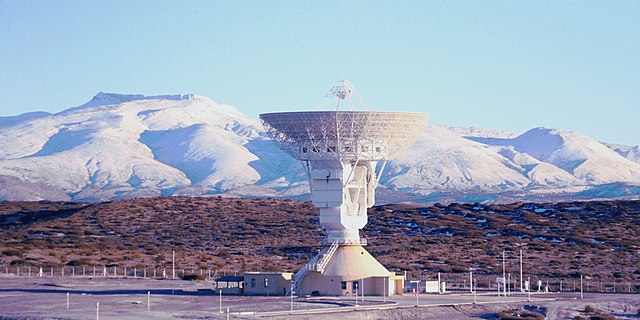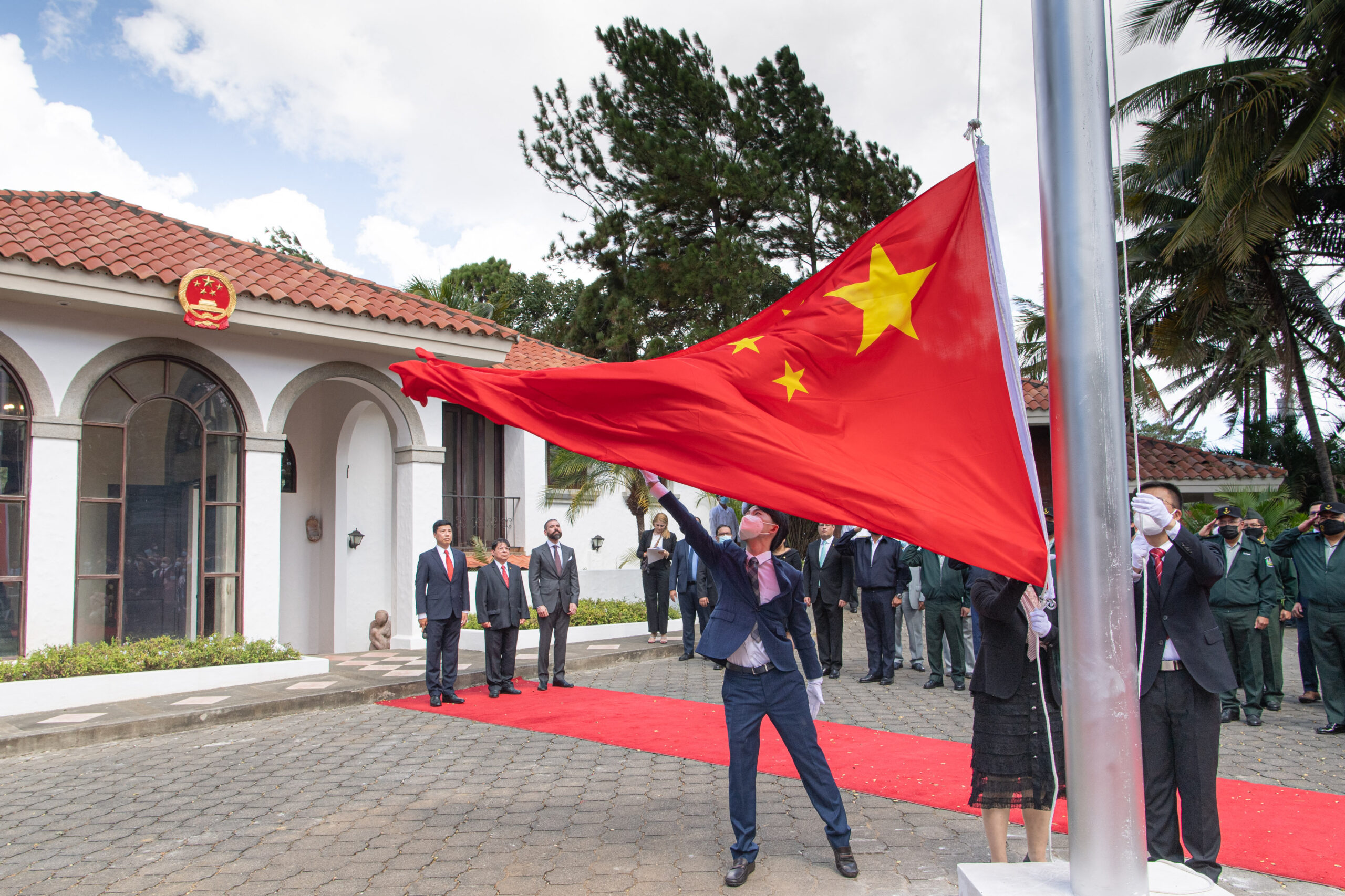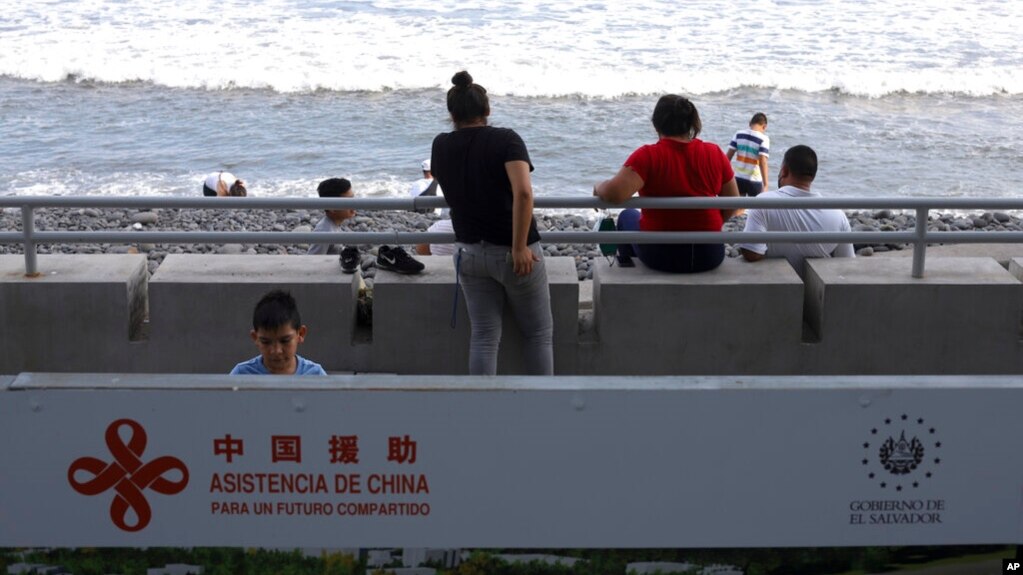China Expands Influence in Central America
With a library here, a power station there, China is using aid and investment to increase its presence in Central America, posing a challenge to the United States’ 2-century-old diplomatic dominance in the region.
China’s interest is driven in part by its rivalry for diplomatic recognition with Taiwan, a self-governing island which has claimed to be the legitimate government of China since the communist victory on the mainland in 1949. But Beijing is also open about its ambition to supplant the United States as the world’s dominant power.
Swayed by Beijing’s dollar diplomacy, three Central American countries — Panama, El Salvador and Nicaragua — have switched diplomatic recognition from Taiwan to China since 2017. So too has the nearby Caribbean island nation of Dominican Republic.
Costa Rica, Honduras, Guatemala and Belize round out the nations of the isthmus connecting North and South America, a region first claimed as part of the U.S. sphere of influence with the enunciation of the Monroe Doctrine in 1823.
Luis G. Solis, interim director of the Kimberly Green Latin American and Caribbean Center at Florida International University, told VOA Mandarin that the U.S. still enjoys an advantage in the region in terms of military, economic, trade, and cultural affairs.
“If these advantages are adequately handled through a proactive diplomacy and a solid developmental agenda, China’s space will be greatly diminished,” he said. “But this entails creativity, the investment of time and goodwill, and a permanent and productive dialogue on sensitive issues such as migrations, corruption and transnational organized crime.”
China’s most recent investment occurred in El Salvador, where President Nayib Bukele thanked China for funding of the country’s new national library as construction began Feb. 6.
The $40 million cultural center, located in the capital city of San Salvador, resulted from Bukele’s visit to China in 2019, according to Evan Ellis, a senior associate at the Americas Program of CSIS. The president also secured $500 million for projects including a sports stadium, a new tourist pier, improvement of its water treatment facilities as well as backing for his Surf City project to turn the country’s Pacific coast into a beach vacation destination, according to the 2021 CSIS article, China and El Salvador: An Update.
Also in 2019, El Salvador signed on with China’s controversial Belt and Road Initiative, (BRI) a global infrastructure plan consisting of a “belt” of overland corridors and a maritime “road” of shipping lanes.
Bukele’s efforts came after El Salvador severed its ties with Taiwan in 2018 under his predecessor, Salvador Sánchez Cerén, who led the fight against a U.S.-backed regime during a civil war that lasted from 1979-92.
China’s buildup in Central America has grown since management of the Panama Canal transferred from the joint U.S.-Panamanian Panama Canal Commission to the Republic of Panama in 1999, according to an article by Daniel Runde, director of the Americas Program at CSIS.
In November 1999, the Panamanian government awarded the Hong-Kong based firm Hutchison-Whampoa concessions to operate ports on both the Atlantic and Pacific sides of the canal, according to the website DialogoChino.
Since then, “Chinese companies have been heavily involved in infrastructure-related contracts in and around the canal, in Panama’s logistics, electricity, and construction sectors,” according to DialogoChino.
By 2017, Panama had shifted diplomatic relations from Taiwan to Beijing and five months later became the first country in the region to join BRI. Since then, China has invested in over 20 infrastructure projects in the country, including bridges, railways and power stations. As of January, Belize, Guatemala and Honduras are not BRI partners with China.
China's state-back media Global Times published an opinion piece on December 13, 2021, by Pan Deng, executive director of the Latin American and Caribbean Region Law Center of China University of Political Science and Law. He suggested that the U.S. views Central American nations as "sources of cheap labor and low-end industrial raw materials, but also the dumping ground for outmoded American industries.”

The piece continued to say, "Previously, these countries had no other choices but to turn to the U.S. However, as China has developed rapidly in recent years, a reference model is being provided for how developing countries can develop from backward agricultural countries to industrialized ones while achieving long-term social stability."
Analysts say that Beijing is using aid in various guises to persuade more Central American and Caribbean countries to establish formal relationships with the People’s Republic of China (PRC).
Benjamin Gedan, deputy director of the Wilson Center's Latin American Program, told VOA Mandarin that Beijing has an economic agenda in Central America and the Caribbean, but the effort is driven largely by geopolitical considerations, “including its bitter rivalry with Taiwan and its desire for support in multilateral institutions.”

“Given the Chinese Communist Party’s intense focus on isolating Taiwan, it is likely to continue investing in Central America and the Caribbean. After all, Beijing likely sees these countries as relatively cheap to buy off, and it has enjoyed a string of diplomatic victories,” Gedan added.
Another goal for China’s efforts in the region is to expand the BRI to Central America, as a push to play a bigger role on the global stage.
In December 2021, Cuba became the latest country to join China's Belt and Road initiative. Jamaica joined in 2019, as did six other island nations in the Caribbean, and Costa Rica joined in 2018.
China has also increased its investment in natural resources in Central America and the Caribbean Basin. According to the Congressional Research Service, in 2020, China’s imports from Latin America and Caribbean countries amounted to $165 billion, consisting primarily of natural resources, such as ores (35%), mineral fuels (12%) and copper (6%).
Rebecca Ray, a senior academic researcher at the Boston University Global Development Policy Center, told VOA Mandarin that she’s not surprised to see China’s interest in infrastructure cooperation with Central America and productive investments in the Caribbean.
She pointed out that the Central American region has suffered from weak economic growth for decades. It is also vulnerable to climate change, which is bringing more natural disasters to low-lying islands and coastal areas. As a result, according to Ray, these countries have a greater need for new inbound investment.
“At the same time, Western investors have not shown interest in starting new projects or being exposed to developing country economies during the COVID-19 pandemic. Thus, any new potential source of investment will naturally be taken seriously,” she added.
Despite the need for infrastructure investment in Central America and the Caribbean, the biggest obstacle to maintaining economic growth may be poor governance, according to online magazine Dialogo.
“Partnership with China might bring in new foreign investments, but it only deepens governance challenges, given China’s disinterest in corruption, its lack of transparency, and its export of technologies that enable Central American governments to curtail civil liberties,” said Gedan.
Microsoft said in December 2021 that it believed Beijing-backed hackers were targeting organizations in both the private and public sectors in five Central American nations: Dominican Republic, Ecuador, El Salvador, Honduras, and Panama.
 Photo courtesy of CONAE
Photo courtesy of CONAE
While Chinese economic engagement with Latin America is not immediately harmful to U.S. national security interests, the influence that accompanies China’s recent and rapidly expanding entanglements in the region is causing concern for U.S. strategic thinkers. Domination of mining sectors enables China to deny U.S. access to critical resources, infrastructure projects cultivate relationships and positions for projecting Chinese power, and import and export market dependence makes Latin American states susceptible to Chinese pressure on political and military issues. In the lens of grander U.S.-China rivalry, Chinese activity in this region amounts to an extension of the traditional security competition to a new strategic theatre in the U.S. periphery, which warrants greater attention in U.S. national security strategy.
RAW MATERIALS IN LATIN AMERICA
Using direct investments, corporate mergers and acquisitions, and loans as vehicles for securing mine ownership, China ensures its continued access to critical mineral inputs for advanced weapon manufacturing and renewable energy technologies with the implicit ability to restrict U.S. access to these same resources. This includes a near monopoly on the niobium mined in Brazil, which is used for military aircraft engines due to its ability to withstand high temperatures. These mines are one of the only sources of the rare earth mineral outside of China, making it the second highest supply chain risk to U.S. national security manufacturing needs. China also maintains several large stakes in the lithium mines of Chile, Argentina, Bolivia, and Mexico, which combined comprise the largest concentration of lithium on the planet. Lithium is used in batteries that are crucial to powering modern military electronics and hardware as well as storing renewable energy for everything from electric cars to solar panels and wind turbines, making them vital for the future engines of a healthy economy.
POWER PROJECTION
Chinese infrastructure investment in Latin America likewise presents new risks for U.S. national security. The construction of “dual-use assets,” most notably several dozen deep water ports that Chinese firms have been contracted to build, provide both commercial and military value since they can host larger shipping vessels as well as warships. A Chinese space radar and communications facility in Argentina likewise offers benign benefits to China’s space program while also enabling surveillance and targeting of U.S. satellites. The base, operated by the People’s Liberation Army and not China’s space agency, nonetheless opens the door for a snowballing Chinese military footprint in the region to protect the assets that state-affiliated corporations build. Diplomatically, China may also push for a sphere of influence over the Panama Canal, where it has already leased and deepened ports on either side of the waterway, supplied logistics and electricity to the Canal, and granted Belt and Road Initiative funding for other Panamanian infrastructure. In total, these positions provide China with a logistical and basing network to extend, sustain, and project military power into the Western hemisphere according to SOUTHCOM.
If U.S.-Chinese competition ever escalates to war, the Chinese presence in Latin America will afford it numerous strategic advantages. Given the proximity of U.S. allies and bases to China, including Australia, Japan, and South Korea, Beijing could compensate for its encirclement in the Pacific with a pre-existing power projecting force in the Southern Hemisphere to hold U.S. assets at risk. China’s position would also enable the PLA to interfere with U.S. logistics to the Pacific, and at a minimum would divert U.S. resources away from the principal conflict. In sum, a military posture in Latin America provides options for Beijing.
LEVERAGE
Ultimately, the most concrete gain from Chinese economic engagement in Latin America is leverage over the alignment of the continent in the context of global U.S.-China competition. Currently, China is the top trading partner of Brazil, Chile, Peru, Uruguay and the second largest trading partner for many more countries in the hemisphere. These relationships have made these states dependent on Chinese demand for their commodity exports while other countries have accrued “unsustainable” levels of debt to China. These conditions make Latin American countries vulnerable to Chinese influence. For instance, in the past China has used its disproportionate economic power to induce Costa Rica, Panama, El Salvador, and the Dominican Republic to renounce diplomatic recognition of Taiwan. Similarly, China could choose to persuade or intimidate Latin American states to open ports, airfields, factories, farms and oilfields exclusively to the PLA for sustaining military operations against the U.S. during a future crisis. More likely is that China will use its influence in Latin America to build coalitions and pressure points capable of weakening the ability of the U.S. pursue its international interests—a scenario against which the U.S. should better fortify its relationships to the south.
China Expands Influence in Nicaragua

Since the Ortega-Murillo regime of Nicaragua broke its diplomatic ties with Taiwan, the bond of friendship between Nicaragua and the People’s Republic of China has grown stronger in a number of strategic areas.
One example are the frequent meetings between high authorities of the two countries. On November 16, the head of the National’s People Congress and of Nicaragua’s National Assembly held a virtual meeting, one year after diplomatic relations were reestablished between the two countries, Nicaragua’s state-owned news site El 19 Digital reported.
“The alliance between the two countries fits perfectly based on their interests. The Ortega-Murillo have one more ally to sustain their dictatorship,” Jorge Serrano, a security expert and member of the team of advisors to the Intelligence Commission of the Peruvian Congress, told Diálogo on November 26. “China has in Managua a small country with a geostrategic location close to the United States.”

Nicaragua broke ties with Taiwan, considered a renegade province, on December 10, 2021, after the Organization of American States (OAS) and the bulk of the international community rejected the legitimacy of the elections in which Ortega clung to power for the third consecutive time, German news site DW reported.
More prominent role
On November 12, this new political ally of the Ortega-Murillo regime delivered to the Nicaraguan National Police, accused of committing genocide and serious human rights violations, an unknown amount of equipment and defense materiel, Managua’s daily La Prensa reported.
“This donation shows how China is beginning to take Russia’s place in strengthening the Ortega-Murillo dictatorship,” Serrano said. “Moscow cannot provide those resources, because it doesn’t have them.”
In April 2018, the Nicaraguan Police was accused of killing more than 300 civilians protesting against Ortega. In 2018 and again in 2020, the U.S. government sanctioned the Nicaraguan Police, as well as its Director General Francisco Díaz, according to statements from the U.S. Treasury Department.
“The Kremlin is in serious trouble because of the conflict it created in Ukraine, so it ceded to China its hegemonic role in Nicaragua, who will also supply armaments for the Nicaraguan security forces,” Serrano said. “Beijing […] is going to completely engulf Nicaragua.”
The regime’s violence is not only perpetrated at the hand of the police, but also by paramilitary entities acting with the complicity of the regime, the Nicaraguan Center for Human Rights indicated in a report. Since China and Nicaragua resumed diplomatic relations, both countries have signed several cooperation agreements to establish mechanisms for political consultations, and agreements for support and commercial participation, among others, Spanish news agency EFE reported.
Destabilizing factor
“China is mercilessly advancing in the Caribbean region,” Serrano said. “Nicaragua is a destabilizing factor in the region and China’s presence, by the law of political gravity, is going to attract another country to its axis as a satellite. Beijing is very adept at that. We are no longer talking about just one country.”
In this new role China “could facilitate, support, promote, and incite the dictatorship in Nicaragua, in exchange for protection and the resources it will provide, to facilitate the transit of drugs and chemical precursors for fentanyl, so that the Mexican cartels can produce it,” Serrano added.
China’s influence in Latin America has many associated risks, from facilitating corruption to increasing threats to countries’ security and its environmental abuses.
More international pressure
In April, the OAS called on the Ortega-Murillo regime to dismantle its oppressive system and urged the international community to increase political pressure on the regime to return Nicaragua to the path of democracy, reported independent Nicaraguan online media Despacho 505.
“International pressure has to come first from our continent through a high-level OAS commission. If the dictatorship refuses, as is very likely, it must be made ineligible for credits from the international financial system,” Serrano concluded. “More political and economic pressure must be exerted now. China is more determined to position itself in Nicaragua.”






No comments:
Post a Comment
Comments always welcome!